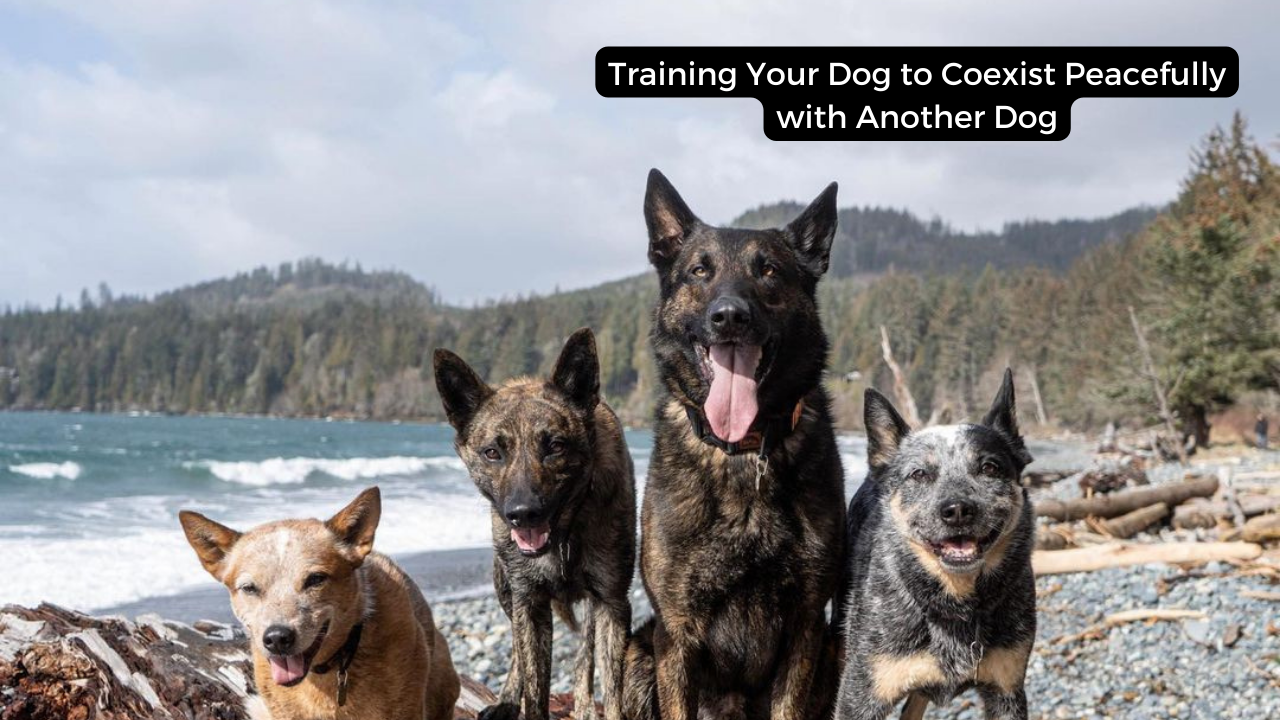Welcoming a new furry friend into your household can be an exciting and rewarding experience. However, introducing two dogs and fostering a harmonious coexistence requires careful planning, patience, and effective training. Just like humans, dogs have their unique personalities and preferences, which can lead to both joyous interactions and occasional conflicts. In this comprehensive guide, we’ll explore the art of training your dog to coexist peacefully with another dog, ensuring a happy and balanced household dynamic.
Understanding the Dynamics: Canine Pack Behavior
Dogs are inherently social animals with a strong pack instinct. Understanding their pack behavior is the key to successful coexistence. While they may have their tiffs, dogs thrive on a clear hierarchy and respect for each other’s space. Your role as the pack leader is pivotal in establishing this framework.
Choose the Right Match
When introducing a new dog to your household, compatibility is crucial. Consider factors such as size, age, and energy levels. A balanced pairing increases the likelihood of positive interactions and reduces the chances of conflicts.
Neutral Territory Introduction
The first meeting should take place on neutral ground, away from both dogs’ territories. This reduces territorial instincts and minimizes potential confrontations. Have two handlers present, each with one dog on a leash.
Controlled Leashed Interaction
Start with controlled leashed interactions. Allow the dogs to sniff and observe each other while maintaining a safe distance. Gradually decrease the distance as they become more comfortable. Positive experiences during these initial meetings lay the foundation for their relationship.
Positive Reinforcement and Rewards
Reward calm behavior and positive interactions with treats and praise. Associating each other’s presence with positive experiences creates a sense of camaraderie. This conditioning reinforces the notion that being around each other leads to enjoyable outcomes.
Parallel Walks
Parallel walks are a great technique to foster positive associations. Walk the dogs side by side, maintaining a safe distance. Over time, gradually decrease the gap between them. The synchronized activity helps them bond without the pressure of direct interaction.
Gradual Supervised Playtime
Once the dogs display relaxed body language during parallel walks, you can progress to supervised playtime. Keep the initial sessions short to prevent overstimulation. Observe their interactions closely, intervening if play escalates into roughness.
Establishing House Rules
Setting clear house rules is vital. Establish consistent feeding times, designate resting spots, and create separate spaces for each dog. This prevents resource guarding and reduces potential conflicts over territory.
Identifying and Addressing Conflict
Even in the most harmonious households, conflicts might arise. It’s crucial to identify signs of tension early on – raised fur, stiff body language, growling – and intervene to diffuse the situation. Redirect their focus using commands they’ve learned.
Conclusion
Training your dogs to coexist peacefully isn’t just about minimizing conflicts. It’s about nurturing a bond that goes beyond mere cohabitation. With patience, understanding, and effective training, you can create an environment where your dogs support and enrich each other’s lives.
